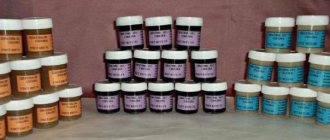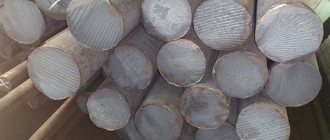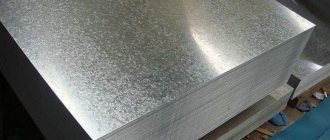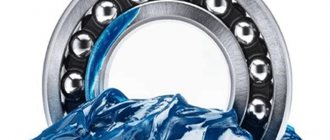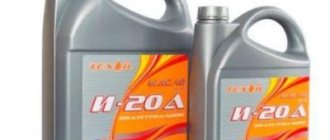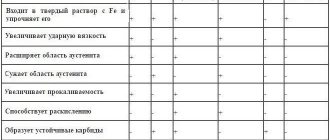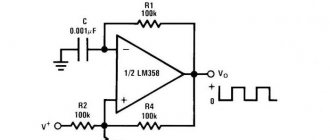For many car enthusiasts, the choice of lubricant for servicing their car is quite difficult. This is quite understandable, considering that everyone wants to have a universal lubricant on hand, suitable for servicing most car components in all weather conditions.
Let's consider the composition, characteristics and features of CIATIM-221 lubricant, which, according to GOST, is intended for lubrication of friction units and mating metal-to-metal, as well as metal-to-rubber surfaces. This will help determine the area of its practical effective application or select similar materials.
What does CIATIM mean?
If you take a short excursion into history, you can easily find out that CIATIM is the abbreviated name of the Soviet research institution in which lubricants were developed.
The Central Institute of Aviation Fuels (CIATIM) and Oils was established on April 27, 1933. Among the priority areas of work of this institution was the creation of unique fuels and lubricants with improved properties.
During its existence, the organization changed its name several times. On March 26, 1966, the last renaming took place. Currently it is VNII NP.
During World War II, a breakthrough was made - lithium lubricants were developed almost simultaneously in different countries. The USSR was one of the first in this area. CIATIM produced various compounds, one of which was named after the developer organization.
However, in fact, there is no specific CIATIM lubricant!
Under this name, several lubricants have been and continue to be produced, the name of which consists of the word CIATIM and a digital designation. And these are materials with completely different properties and characteristics, each of which was created to solve specific problems. Therefore, it is completely incorrect to talk about any properties, advantages and disadvantages of CIATIM lubricants.
Description of the lubricant
It is worth noting that CIATIM lubricant was developed by the Central Institute of Aviation Fuel and Oils. Many highly praise this product, and also claim that the use of this substance has many possibilities. However, in practice it turned out that the scope of use of this particular brand, as well as its specificity, have rather narrow characteristics. In order to determine whether this is true or not, it is worth delving into the study of the physico-chemical, as well as operational properties of CIATIM lubricant.
It is important to understand that all the features of this lubricant are determined precisely by the physical and chemical composition of this substance. The raw material contains organosilicon liquid. In addition, the lubricant contains a thickener in the form of complex calcium soap. The ability to work in a wide temperature range is due precisely to the fact that the composition includes organosilicon liquid. Maximum operating temperatures are from -60 (possibly lower) to +300 degrees Celsius. This factor influences the fact that the possibility of using the lubricant expands from various cryogenic devices to high-temperature equipment. It is also important that organosilicon liquid evaporates slightly, which makes it possible to use it in a vacuum. Thanks largely to these qualities, the use of CIATIM lubricant has spread to aerospace technology.
Selection and operation
CIATIM-221 has also found its application in specialized equipment.
Most often, such devices are cryogenic chambers or high-temperature units. The performance characteristics of such a substance also make it an excellent assistant when working in a vacuum. In particular, because of this indicator, lubricant is often used not only in industry, but also in the production of particularly precise instruments or devices. It is worth noting that when choosing such a universal substance you must be very careful, as counterfeits are possible. Some manufacturers, in pursuit of lower prices and increased customer demand, began to use not organosilicon, but purified mineral petroleum oil, or, even worse, simply dilute a type of lubricant such as Litol-24 with oil. Of course, the final cost is lower, but the characteristics of using CIATIM-221 lie precisely in organosilicon, and without this substance the effect will be many times worse.
Heat-resistant grease
A lubricant called CIATIM belongs to the group of heat-resistant plastic substances. In appearance, such a product is a synthetic oil, which is artificially thickened using complex calcium soap with the addition of an antioxidant additive. The purpose of CIATIM grease is to lubricate rolling bearings in electrical machines, control systems, as well as devices whose rotation speed reaches 10,000 rpm. In addition, the composition is used for aggregate bearings installed on aircraft. Another area of application is friction units, as well as mating surfaces made of metal-to-metal and metal-to-rubber materials, the temperature of which ranges from -60 to +150 degrees Celsius.
Compound
The difference between Ciatim-221 and other lubricants from the manufacturer lies in the silicone base “132-24”, which makes up up to 88% of the volume. Calcium stearate acetate or calcium soap is used as a thickener, accounting for 10% of the volume. The remaining 5% is an antioxidant additive that improves viscosity and adhesion, as well as increasing thermal-oxidative stability. Thus, in terms of composition, Ciatim is a calcium lubricant.
It should be taken into account that materials of a different composition are presented on the market under this name. As was said, the composition of Tsiatim-221 according to GOST 9433-80 is strictly regulated. In cheap analogues, in some cases, purified petroleum oil is used as a base. Others are cheaper Litol-24 lubricant diluted with oil. Naturally, in terms of parameters they are completely different from the original.
Properties
CIATIM 221 has properties that made it the best for its time:
- has the quality of lubricating parts at a pressure of 0.6 kPa;
- does not dissolve in water;
- low wear resistance;
- when the temperature rises, its properties are stable;
- the operating properties do not change with a significant decrease in temperature;
- it is used in the absence of aggressive vapors;
- maintains density when absorbing moisture;
- inert to rubber and polymers;
- operates at different temperatures from -60°C to + 150°C;
- retains its quality for up to 40 years.
Characteristics
The main advantage of Ciatim 221 lubricant over other plastic compounds is the ability to use it under severe temperature conditions. The substance retains its physical properties at +150 degrees. If it is necessary to treat mechanisms that are in the cold, then the composition can be used at temperatures down to minus 60 degrees.
The high versatility of this material is achieved due to the correctly selected substances included in the composition of “Ciatim 221”. The following ingredients are used to produce the mixture:
- Silicone oil.
- Calcium soap.
- Antioxidant additives.
"Ciatim 221" does not contain water, but when stored in an open container, it absorbs it from the air. To prevent this process, it is forbidden to leave containers with lubricant open, and also to use it for processing mechanisms and machines operating in conditions of high humidity.
Lubricant can be used to reduce friction when operating metal parts, but is especially effective when used in units where rubbing metal and rubber surfaces come into contact. Due to the absence of petroleum products in the composition and the presence of antioxidant additives, it is possible to achieve the maximum service life of oil seals and bearing cuffs.
TECHNICAL REQUIREMENTS
1.1. The lubricant must be manufactured in accordance with the requirements of this standard, according to the technological regulations and from the components that were used in the manufacture of lubricant samples that have passed state tests with positive results and are approved for use in the prescribed manner.
1.2. In terms of physical and chemical parameters, CIATIM-221 lubricant must meet the requirements and standards specified in the table.
| Indicator name | Norm | Test method |
| 1. Appearance | Homogeneous ointment, smooth structure from light yellow to light brown color | By i. 4.3 |
| 2. Effective viscosity at minus 50 °C and an average strain rate gradient of 10 s-1, Pa s, no more | 800 | According to GOST 7163-84 |
| 3. Tensile strength at 50 °C, not less | 120 | According to GOST 7143-73, method B |
| 4. Dropping temperature, °C, not lower | 200 | According to GOST 6793-74 |
| 5. Penetration at 25 °C, 0.1 mm | 280-360 | According to GOST 5346-78 |
| 6. Corrosive effects on metals | Withstands | According to GOST 9.080-77 and etc. 4.4 of this standard |
| 7. Colloidal stability, % of extracted oil, no more | 7,0 | According to GOST 7142-74 and etc. 4.5 of this standard |
| Official publication | Reproduction is prohibited |
★ Edition with Amendments No. 1, 2, 3, approved in August 1982,
April 1986, April 1991 (IUS 11-82, 7-86, 7-91).
Continuation of the table.
| Indicator name | Norm | Test method |
| 8. Mass fraction of alkali in terms of NaOH, %, no more | 0,08 | According to GOST 6707-76 and etc. 4.6 of this standard |
| 9. Water content | Absence | According to GOST 2477-65 |
| 10. Content of mechanical impurities | » | According to GOST 6479-73 and etc. 4.7 of this standard |
| 11. Evaporation at 150 °C for 1 hour, %, no more | 2,0 | According to GOST 9566-74 |
1.1—1.2. (Changed edition, Amendment No. 1, 3).
Features of lubrication that appear during operation:
- insoluble in water, hygroscopic, remains stable at boiling point, but at high air humidity it hardens and loses its original characteristics;
- used as a multifunctional lubricant in difficult operating conditions that require resistance to washout, low (up to -60C) and high (up to 150C) temperatures and their sudden changes;
- when heated for a short time to 180C, it does not lose functionality and does not become stronger;
- the manufacturer focuses on the fact of incompatibility with other lubricants - even accidental mixing must be excluded, including products with lithium based on petroleum oils;
- special additives included in the composition increase operating efficiency - friction units and mating metal-to-metal surfaces are protected from corrosion, scuffing and wear;
- fire- and explosion-proof, does not belong to self-igniting products;
- inertness to polymers allows the product to be used to lubricate the surface of sealing rings of pneumatic cylinders, as well as for metal-rubber surfaces operating in a vacuum;
- refers to non-toxic products, safe for the respiratory system and skin, however, the manufacturer recommends using PPE when working;
- colloidal stability – high, which helps maintain the consistency of the lubricant;
- chemically resistant – used for sealing threads, shut-off valves, seals;
- for friction pairs metal and metal rubber;
- is capable of ensuring trouble-free operation of the components of most modern devices, incl. and devices with rotation speeds up to 10 thousand revolutions per minute.
Area of use
The product is a multi-functional lubricant that works under various loads, over a wide temperature range and at any speed. It is used in many industries, including instrument-making, metallurgical, automotive, agricultural, aviation, petrochemical and other industrial sectors.
Proven to lubricate:
- mating metal/rubber surfaces operating in high vacuum;
- control and measuring and radio instruments, as well as mechanisms with a rotation speed of up to 10,000 min-1;
- drive mechanisms, as well as all types of transmissions;
- lens mechanisms for photographic and film equipment;
- navigation systems, counting devices, automatic control and instruments with a full speed of up to 10 thousand per minute;
- rolling bearings of electric machines of control and monitoring systems in lightly loaded gearboxes;
- pneumatic brake boosters, steering racks and vehicle suspensions;
- many other elements - just check with the manufacturer or its official representative for compatibility.
Advantages and disadvantages
The two main advantages of CIATIM-201 lubricant are the possibility of long-term operation at low temperatures and its low cost, which contributes to its widespread use in various fields of activity. In addition, it should be noted:
- good mechanical stability;
- high refractory properties;
- chemical inertness;
- electrical conductivity;
- Quite a long shelf life.
The main disadvantage of CIATIM-201 lubricant is its possible hygroscopicity and moisture saturation. At low temperatures, this can cause ice crystals to form and damage the lubricated assembly. Therefore, the area of use is limited to a closed space without access to moisture. A serious drawback is the impossibility of using the lubricant under medium and high mechanical loads. In addition, during outdoor use, CIATIM-201 dries out, gradually reaching a dense abrasive state. Therefore, it is not recommended for use for long-term preservation of machines and mechanisms.
Safety
- CIATIM221 is low-active, has no toxic effect on the body, and does not irritate the skin and mucous membranes.
- The maximum permissible concentration of the liquid lubricant base in the air of the working area is 10 mg/m5.
- When working with lubricants, it is necessary to use personal protective equipment in accordance with standard industry standards approved in the prescribed manner.
- Persons working with lubricants should wash their hands with warm water and soap before eating, smoking and after finishing work.
- It is not fire or explosive, it is a flammable product of group IV. The flash point of the liquid lubricant base is above 265 °C.
When the lubricant catches fire, the following fire extinguishing agents are used: compositions SI-VK, SI-2 and SZhB-BF-2.
5. PACKAGING, LABELING, TRANSPORTATION AND STORAGE
5.1. Packaging, labeling, transportation and storage of lubricant - in accordance with GOST 1510-84 with the following addition: the lubricant is packaged in tinplate cans and, at the request of consumers, in aluminum tubes without coating or with an internal coating with phenol-polyvinyl acetate glue BF-2 in accordance with GOST 12172-74 with a capacity of 40 -200 g. Tubes with lubricant are packed in wooden or plywood boxes in rows, with cardboard or paper spacers between the rows. Gross and net weights are not indicated on the tubes. The batch number, month and year of manufacture of the lubricant are stamped.
5.2. The lubricant must be stored in the manufacturer's container.
5.3. (Deleted, Amendment No. 3).
Restrictions
Tsiatim-221 lubricant turns out to be ineffective if equipment is operated for a long time at extremely low temperatures. It should also be noted that this product, due to its relatively high viscosity, helps to increase contact resistance (by 15...20%). The reason for this is the weak electrical properties that Cyatim-221 exhibits at high temperatures. For the same reason, lubricant is not recommended for use in rubbing parts of power electrical devices.
3. ACCEPTANCE RULES
3.1. The lubricant is taken in batches. A batch is considered to be a quantity of lubricant weighing up to 1000 kg, uniform in terms of quality, accompanied by a quality document. (Changed edition, Amendment No. 1, 2.).
3.2. The volume of samples is in accordance with GOST 2517-85.
3.3. If unsatisfactory test results are obtained for at least one indicator, repeated tests are carried out on a newly selected sample from the same sample. The results of repeated tests apply to the entire batch.
3.4. The indicator “Volatilization at 150 °C” is determined by the manufacturer at the request of the consumer. (Changed edition, Amendment No. 2).
Comparison of "Ciatim-201" and "Ciatim-221"
Many motorists are interested in the question: is it possible to use Tsiatim-221 instead of Tsiatim-201? Looking ahead, we’ll answer right away - yes, it’s possible, but the 221st Tsiatim has a number of features. We list the main characteristics and differences between the two lubricants:
- "Ciatim-221" is a calcium multi-purpose water- and heat-resistant grease based on silicone oil. It can be used to lubricate metal-to-metal and metal-to-rubber surface pairs. "Ciatim-201" with prolonged contact with rubber can "swell" it.
- The operating temperature range of “Ciatim-221” is wider, and is –60°С…+150°С (remember that the similar range of “Ciatim-201” is –60°С…+90°С).
- "Tsiatim-221" costs approximately 3...5 times more than "Tsiatim-201".
- "Tsiatim-221" retains its performance properties for 40 years, unlike "Tsiatim-201", whose shelf life is only 5 years.
- "Ciatim-221" is produced according to a different standard - GOST 9433-80.
In general, it is believed that for modern cars any lubricants in the Ciatim line are ineffective, since they have low performance characteristics compared to new analogues available on the market.
Many car owners are interested in Ciatim 201 lubricant characteristics and application, as well as its main features. And it is worth noting that the product is widely used among consumers in its category. And this is all due to the fact that the lubricant has excellent technical characteristics and is manufactured in accordance with GOST.
The product appeared on the automotive market quite a long time ago, which is why drivers are already well aware of its properties and features, and prefer it. Even though the market offers new, more improved analogues
In the production of the substance, lithium soap and petroleum oils are used. Anti-oxidation additives are also added here. Ultimately, the substance turns out to be quite thick. Its color can range from light shades of yellow to brown. The composition of the substance is universal, so it is excellent for use in various conditions.
Externally, the product looks like an oily, brownish composition. Due to the fact that the substance contains lithium soap, the product also has another name - lithium grease. In addition to the specified additive, the product consists of the following ingredients:
- low viscosity petroleum oil;
- lithium stearate (lithium soap), which is used as a thickener;
- additives that protect lubricated surfaces of parts from oxidation.
Due to the presence of such substances in the composition, the product performs its functions at thermometer readings of -60 - + 90 degrees Celsius. The safety margin of the product is 500 Pa (Pascal).
General information
Some people believe that this lubricant is not suitable for any household devices or machines. Most often, this assumption is based on the fact that the name CIATIM itself is associated with the name of the university that developed the composition. The educational institution belongs to the aviation industry. However, the scope of application of CIATIM-221 is much wider. It is possible that during the development of this substance it was planned to use it only in aviation technology. However, the resulting product became very popular in many industries, as well as among individuals.
Which is better - Litol 24 or CIATIM-221?
This question can often be heard from newbie car owners.
However, the formulation of the question itself is fundamentally incorrect and incorrect. This is the same as asking which is better, bread or cheese. Although Litol-24 and CIATIM-221 are greases, they were originally created for different purposes. Litol was developed as a universal lubricant for normal conditions of use, and CIATIM was developed as a special heat- and frost-resistant lubricant.
The first of the materials is made of mineral oil and is effective in the range of medium loads and speeds, but can withstand significant loads. Synthetic silicone grease CIATIM-221 cannot withstand significant loads, but is used in high-speed bearings.
LITOL-24 works well in metal-to-metal friction pairs, but is aggressive towards plastics and rubbers. CIATIM is inert to polymers and elastomers, but cannot work in a purely metal friction pair.
In short, these are completely different products with their own pros and cons. And each of them has its own area of application.
Thus, when choosing CIATIM-221 as a lubricant for your car, you need to clearly understand where it will be most effective and where it will not cope with operating conditions. This composition cannot be used as a universal lubricant - for loaded units or metal-to-metal friction pairs it is better to use other, more modern lubricants.
Review of popular analogues
Among the variety of lubricants for CIATIM 221 lubrication, it is difficult to choose an analogue for all operating parameters at the same time. However, when it comes to a specific application, it is very rare that all properties are required at once.
In most cases, when replacing CIATIM 221, car owners look for frost-resistant or more modern materials with improved technical characteristics.
Based on these parameters, you can select materials of both domestic and foreign production.
Efele SG-311
1
place
Efele SG-311
0
/100
RATING
0
100
Efele SG-311 grease is a more modern and universal analogue of CIATIM-221 in terms of application and performance properties.
This material, made on the basis of synthetic PAO oil and lithium soap, retains all its lubricating and protective functions under significant loads and very high bearing rotation speeds in all weather conditions, including frosts down to -60 ° C.
Used with such construction materials as metal, plastic, rubber in any combination of them in a friction pair.
In composition and some characteristics, Efele lubricant is somewhat different from CIATIM 221, however, this material, created using modern technologies and materials, shows much better results in many applications, including at low temperatures.
The cost of this lubricant is comparable to CIATIM 221. When choosing a lubricant for specific applications, this often becomes the decisive factor in favor of Efele SG-311.
You can buy lubricant here.
Molykote EM-60L
2
place
Molykote EM-60L
0
/100
RATING
0
100
Frost-resistant grease from Dow, one of the world's largest manufacturers of lubricants for special and industrial applications.
Made from synthetic PAO oil and lithium soap.
Its operating temperature range: -60…+130 °C.
Advantages:
- High load-bearing capacity
- Performance in dusty environments
- High stability
- Low limit of minimum operating temperatures
Flaws:
- The maximum operating temperature limit is inferior to other lubricants
You can buy lubricant here.
Huskey HVS-100 Silicone Grease
3
place
Relevance in our time
Despite the fact that this lubricant was manufactured in the last century, its last modification was made in 1980 - it remains relevant today. In addition to all of the above applications, it is successfully used as an oil for lubricating cooling fans of modern computers. This allows us to guarantee long and uninterrupted operation of such small and delicate parts. This fact once again confirms the foresight of the inventors of CIATIM 221 lubricant and the high requirements for the performance characteristics of the original high-quality product.
Produced in aluminum barrels with a volume of 40 to 200 grams. For transportation, the product is placed in boxes. 5 year warranty.
Application
CIATIM 221 once again emphasizes the care with which developers in our country treat the manufacture of goods for the military industry. It contains a huge potential of unique qualities in advance.
CIATIM 221 is used to lubricate bearings. Excellent performance is achieved at speeds up to 10,000 rpm.
Incredible, because this lubricant was made specifically for use in aviation and was developed for the 80s of the last century.
However, after a long time, it has not lost its capabilities and remains competitive among modern products.
Currently, it lubricates the components of the latest technology developments.
What analogues do CIATIM lubricants have?
CIATIM lubricants were developed back in the last century, but still have few competitors in terms of price and quality.
In retail outlets there are many foreign-made materials, some of whose properties are significantly superior to those of CIATIM compounds. However, their cost is not comparable.
In some parameters (for example, frost resistance or chemical resistance), our lubricants are superior to most foreign analogues.
However, among domestic lubricants, materials from other brands have been produced over the years (and some are still being produced). In various engineering reference books they were recommended as a replacement for CIATIM lubricants if necessary.
Analogs recommended for replacing CIATIM lubricants:
- For CIATIM 201 - Era, Zimol, Lita, CIATIM-202, CIATIM-221 lubricants were allowed as a substitute
- For CIATIM 202 – CIATIM-201
- For CIATIM 203 – Era, Zimol
- For CIATIM 205 – VNIINP-279
- For CIATIM 208 – Transol-200, Reductol
- For CIATIM 221 – VNIINP-207 (up to -40 °C), CIATIM-221 C
How to protect yourself from counterfeiting
To obtain a quality product, it is necessary to comply with GOST and meet the requirements:
- 100% adhere to GOST requirements;
- test performance throughout production.
However, there are CIATIM 221 manufacturers who take advantage of the lack of awareness among workers in our industry. They are selling counterfeits. Purified petroleum mineral oil is used as a base.
Others dilute Litol-24 lubricant with oils and sell it under the guise of CIATIM 221 lubricant.
The price of analogues is significantly lower than the cost of the original. Accordingly, the characteristics of such counterfeits are not comparable to the original. This harms reviews of CIATIM 221 and jeopardizes the operation of the devices.
To avoid financial losses, you should purchase it only from licensed sellers.
4. TEST METHODS
4.1. Lubricant samples are taken according to GOST 2517-85. The mass of the combined sample is 2 kg of lubricant. In case of disagreement in assessing the quality of the lubricant, the sample must be stored for at least five years.
4.2. Analysis of the lubricant for compliance with the requirements of this standard, in addition to the content of mechanical impurities, is carried out before its packaging. Mechanical impurities are determined in the lubricant packaged in containers.
4.1-4.2. (Changed edition, Amendment No. 1).
4.3. To determine the appearance, the lubricant is applied with a spatula onto a glass plate measuring 50x70x2 mm in accordance with GOST 111-90 using a template (internal dimensions 35x35 mm, thickness 2 mm) and viewed with the naked eye in transmitted light.
4.4. Corrosion testing is carried out on copper plates of grades M0k or M1k according to GOST 859-2001. Discoloration and slight reddish-brown coloring of the plates is allowed.
4.5. When determining colloidal stability, the ashless filter is moistened with liquid 132-24 according to GOST 10957-74. The grease is pressed out at a load of (200±10) g.
4.6. When determining the mass fraction of alkali, analytical grade toluene is used as a lubricant solvent. according to GOST 5789-78 and titrate the hot lubricant solution. (Changed edition, Amendment No. 2).
4.7. When determining mechanical impurities, a sample of lubricant is thoroughly mixed with 75 cm of gasoline until a homogeneous mass is obtained. The mixture is transferred to a separating funnel, 75 cm of 50% acetic acid is added according to GOST 61-75 and stirred vigorously until the lubricant is completely decomposed. After settling and separating the layers, the lower acetic acid layer is filtered. At the end of filtration, the filter is washed three to four times with hot distilled water and dried in a thermostat, then a layer of gasoline lubricant solution is filtered through the same filter.
